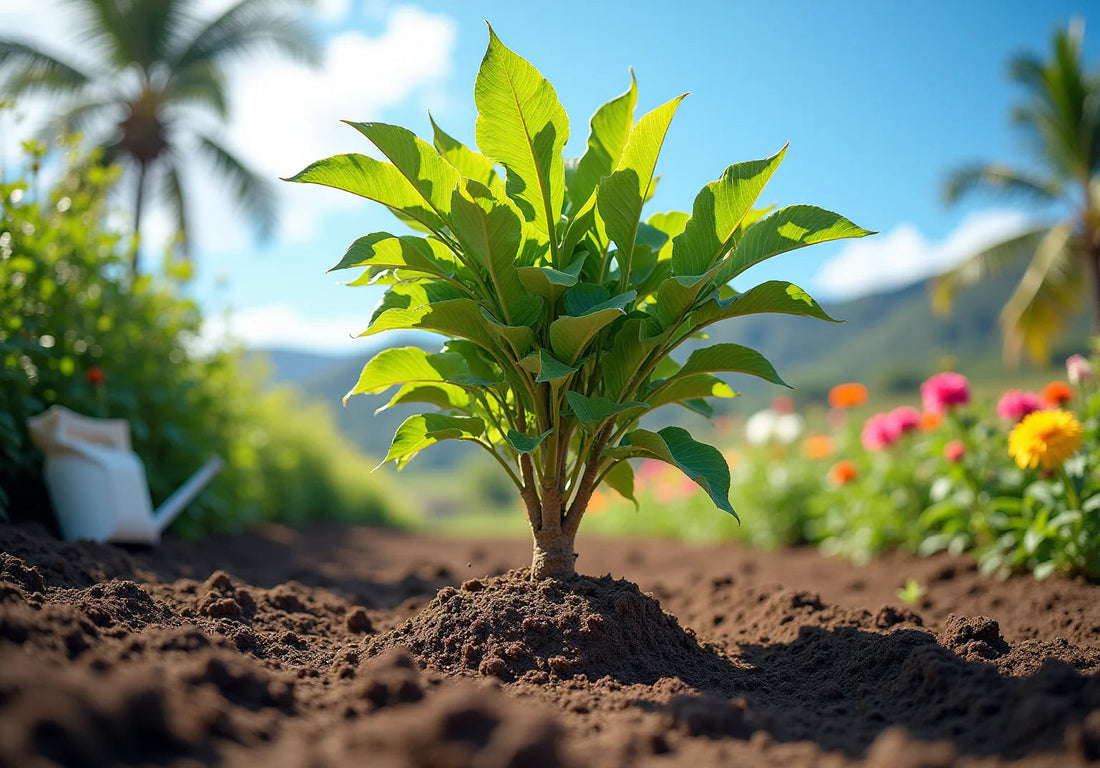
4 Steps to Successfully Grow Your Ilama Tree
Share
Growing an ilama tree can be a rewarding endeavor, offering both beauty and delicious fruit to any garden. However, successfully nurturing this tropical gem requires careful consideration of several key factors, from selecting the ideal planting location to ensuring proper soil preparation. This guide outlines the essential steps to cultivate a thriving ilama tree and provides insights on how gardeners can avoid common pitfalls along the way. By unveiling the four crucial steps, this article empowers enthusiasts to grow their ilama trees successfully, transforming their gardening aspirations into a fruitful reality.
1. Select an Optimal Location for Your Ilama Tree
-
Assessing the sunlight requirements of ilama trees is important, as they thrive in full sun and need at least 6-8 hours of direct sunlight daily. It is essential to find a location that receives ample sunlight throughout the day. This exposure not only accelerates their development but also enhances fruit production, making it vital for a plentiful harvest.
-
Check for Drainage: Ensure that the area has well-draining soil to prevent waterlogging, which can harm the roots. Soil that drains within 1-2 hours indicates good drainage. Avoid low-lying regions where water tends to gather, similar to the best practices for planting soursop plants, which also require excellent drainage for optimal growth.
-
Consider Wind Protection: If you live in a breezy area, choose a location that offers some shelter from strong gusts, as these can damage young plants. Insufficient protection may lead to wind damage, adversely affecting the plant's health and growth. This consideration is particularly important for both the ilama tree and soursop plants, as they can be vulnerable during their early stages.
-
Evaluate Space: Ensure there is adequate space for the ilama tree to grow, as ilama tree species can reach heights of 6-8 meters. Avoid planting too close to structures or other plants that may compete for resources, which allows for optimal growth and fruit yield. This consideration is crucial not only for ilama plants but also for ensuring the success of your passion fruit and soursop varieties in your tropical fruit garden.
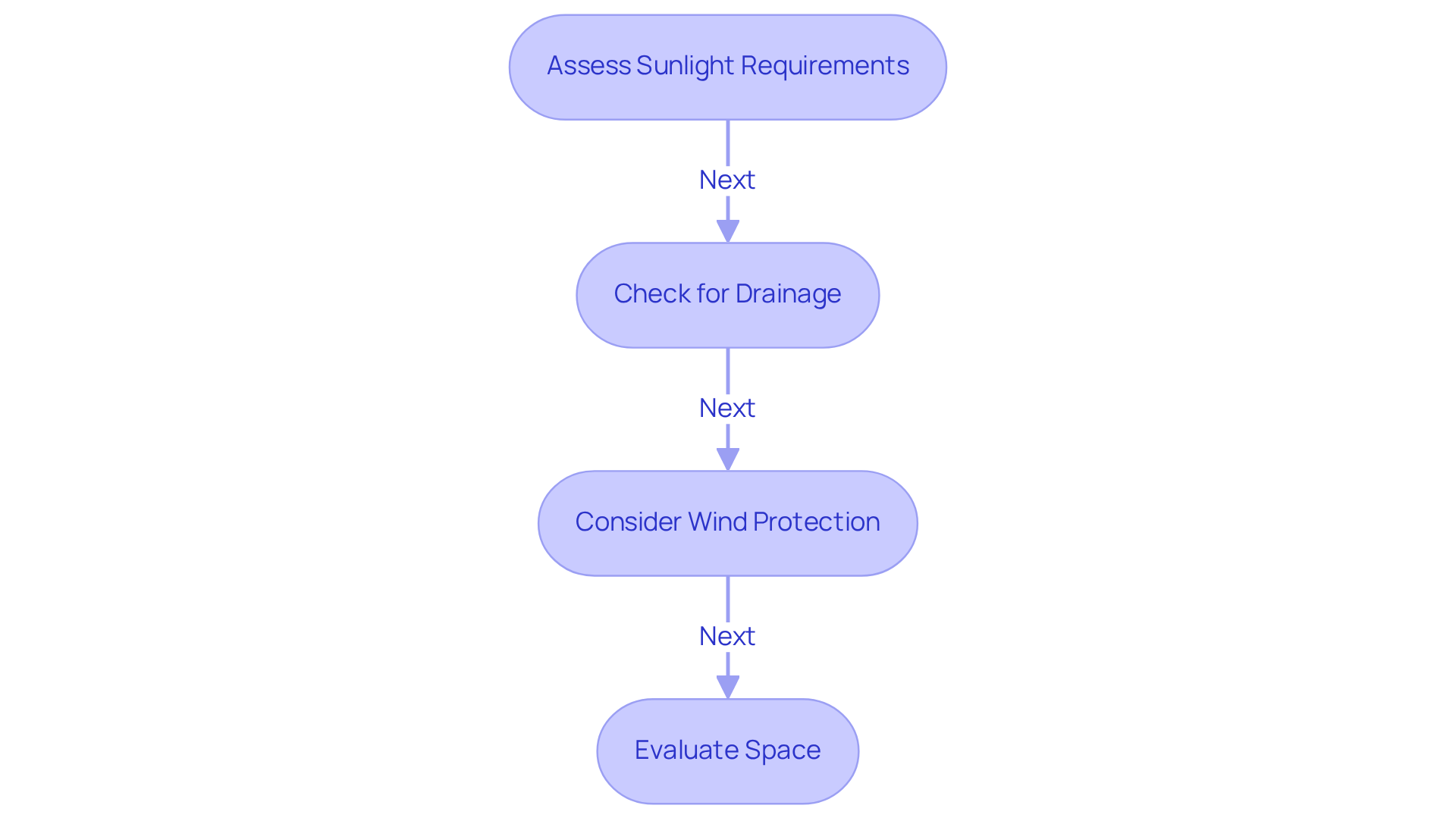
2. Prepare the Soil for Planting
-
Test Ground Quality: Before planting, evaluating the pH and drainage capabilities of the soil is crucial. The ilama tree thrives within a pH range of 6.0 to 7.0, which supports optimal nutrient availability. Utilizing a testing kit will yield accurate results, enabling informed adjustments to the soil's conditions.
-
Amend the Soil: To enhance both fertility and drainage, it is advisable to incorporate organic matter, such as compost or well-rotted manure. A balanced mix of 50% native soil and 50% organic material is recommended. This combination not only improves soil structure but also fosters a rich microbial ecosystem, which is essential for plant health.
-
Create a planting hole by digging a hole that is twice as wide and the same depth as the root ball of your ilama tree, which is essential. This spacious environment encourages growth extension and establishes a strong foundation for development.
-
Mound the Soil: In instances where the soil is predominantly heavy clay, consider mounding the planting area. This technique enhances drainage and prevents water accumulation near the base, which is vital for the plant's long-term vitality. Consistent watering practices can further support root development, as research indicates that plants significantly benefit from improved drainage and aeration during their initial growth phases.
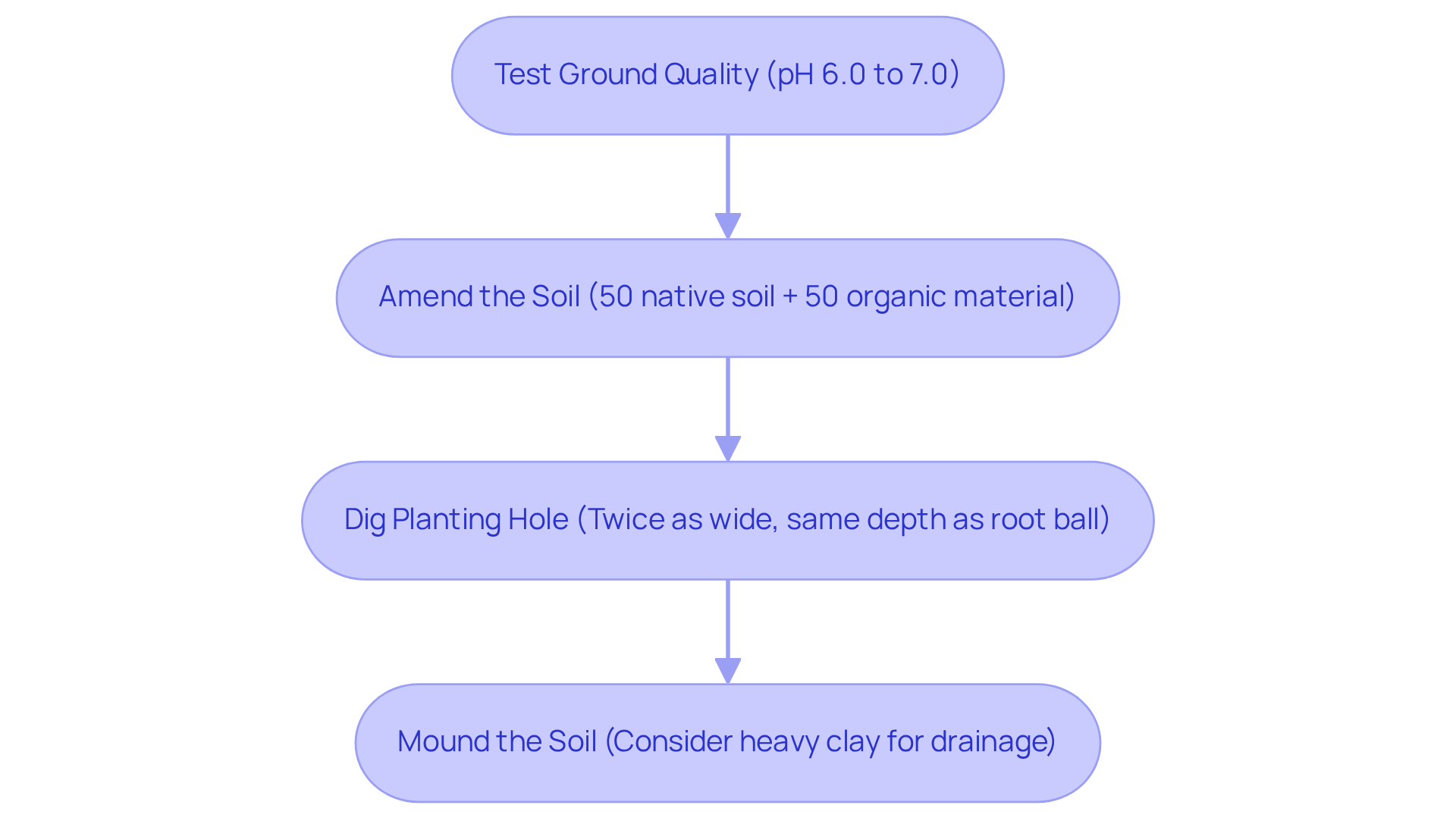
3. Plant Your Ilama Tree Correctly
-
Choose the Right Spot: Selecting an appropriate location for your ilama tree is crucial. Look for a spot that receives ample sunlight and has good drainage, as these conditions will encourage robust development.
-
Position the ilama tree by centering it in the planting hole, ensuring that the top of the root ball is level with the surrounding ground. Correct placement is essential; placing the stems too deep may lead to health issues, such as decay and stunted growth.
-
Backfill the Hole: Carefully backfill the hole with improved soil, packing it lightly to eliminate air pockets. As you fill, water the soil to help it settle around the roots, which is vital for establishing a solid foundation. Research indicates that inadequate backfilling can hinder growth and negatively impact the overall health of the plant.
-
Water Thoroughly: After planting, provide deep watering to help establish the roots. Ensure the ground is damp but not saturated, as this balance is crucial for the plant's development.
-
Mulch Around the Base: Apply a layer of organic mulch around the base of the plant, keeping it a few inches away from the trunk. This practice helps retain moisture, suppress weeds, and regulate soil temperature, all of which contribute to the health and vitality of the plant.
-
Pest Management: Regularly monitor your ilama tree for pests and diseases. Implement preventive measures, such as routine inspections and the use of organic pesticides if necessary, to protect your plant's health.
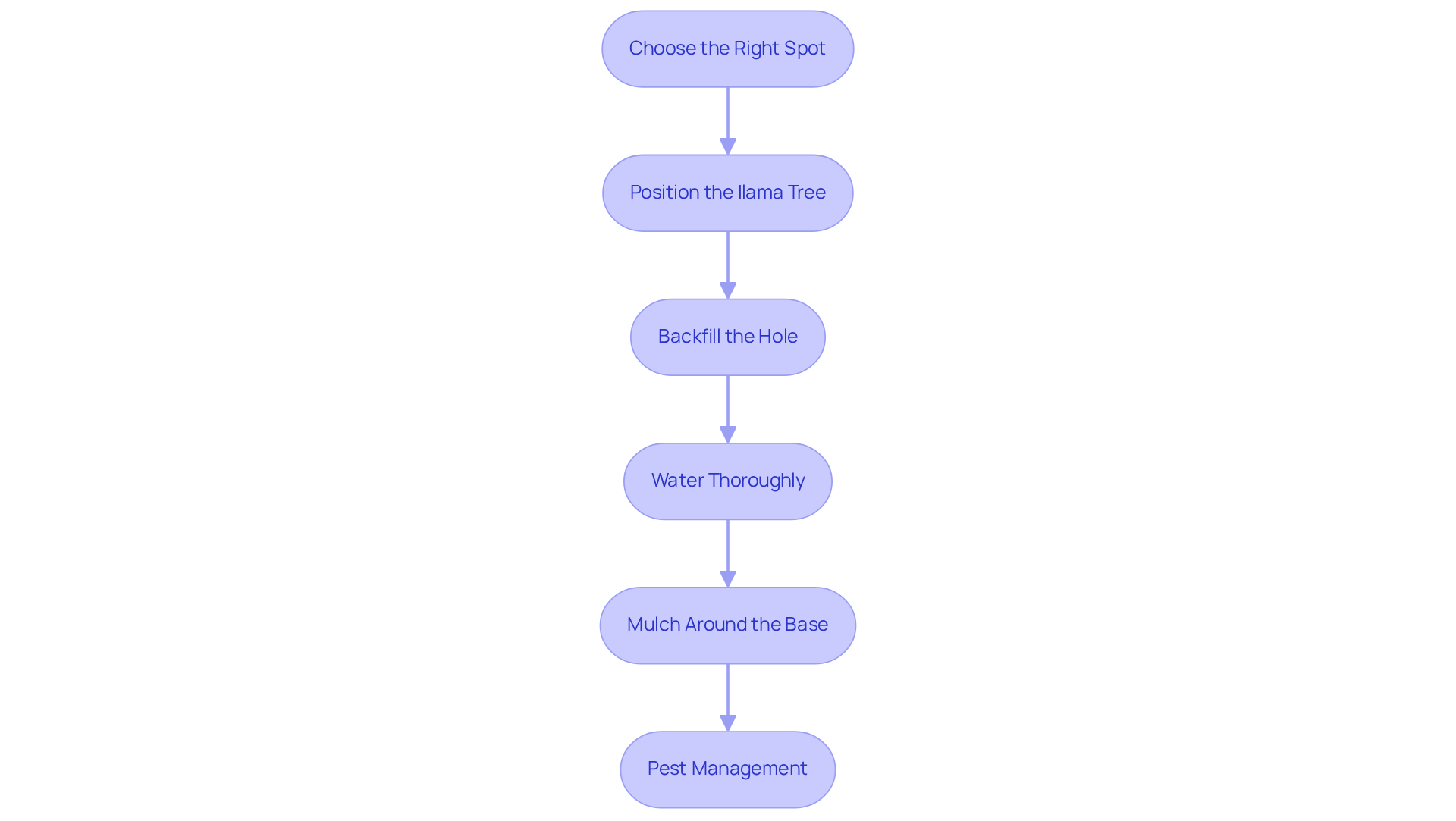
4. Maintain and Care for Your Ilama Tree
-
Water Regularly: It is essential to keep the soil consistently moist yet well-drained. During dry spells, especially in the initial years after planting, water deeply. Aim to apply approximately 1-1.5 gallons of water for every inch of the tree's stem caliper during each watering session. This practice promotes robust root development and helps the tree establish itself effectively.
-
Fertilize Appropriately: Utilize a balanced, organic fertilizer throughout the growing season to encourage healthy growth. Organic options, such as compost or well-rotted manure, significantly enhance soil health and nutrient availability. It is crucial to adhere to the manufacturer's guidelines for application rates to prevent over-fertilization, which can harm the plant.
-
Prune as Needed: Regular trimming of the plant is vital for maintaining its shape and removing any dead or diseased branches. This practice encourages improved air circulation and light penetration, promoting overall plant health and enabling more vigorous growth.
-
Monitor for Pests: Vigilance is key in monitoring for common pests, such as aphids or scale, along with specific threats like passion vine hoppers that can impact nearby passion fruit vines. If pests are detected, treat them promptly with organic insecticides or natural remedies to prevent infestations. This proactive approach is essential for ensuring the health of your ilama tree and the surrounding vegetation.
-
Apply Mulch: Consider applying a 3-inch layer of organic mulch around the base of the plant. This practice aids in moisture retention, cools the ground, and reduces competition from weeds, thereby contributing to the overall health of the ilama tree.
-
Check Soil Moisture: Regularly assess the soil moisture at a depth of 3-4 inches to determine when to water. This practice is crucial for maintaining optimal moisture levels and preventing both over- and under-watering.
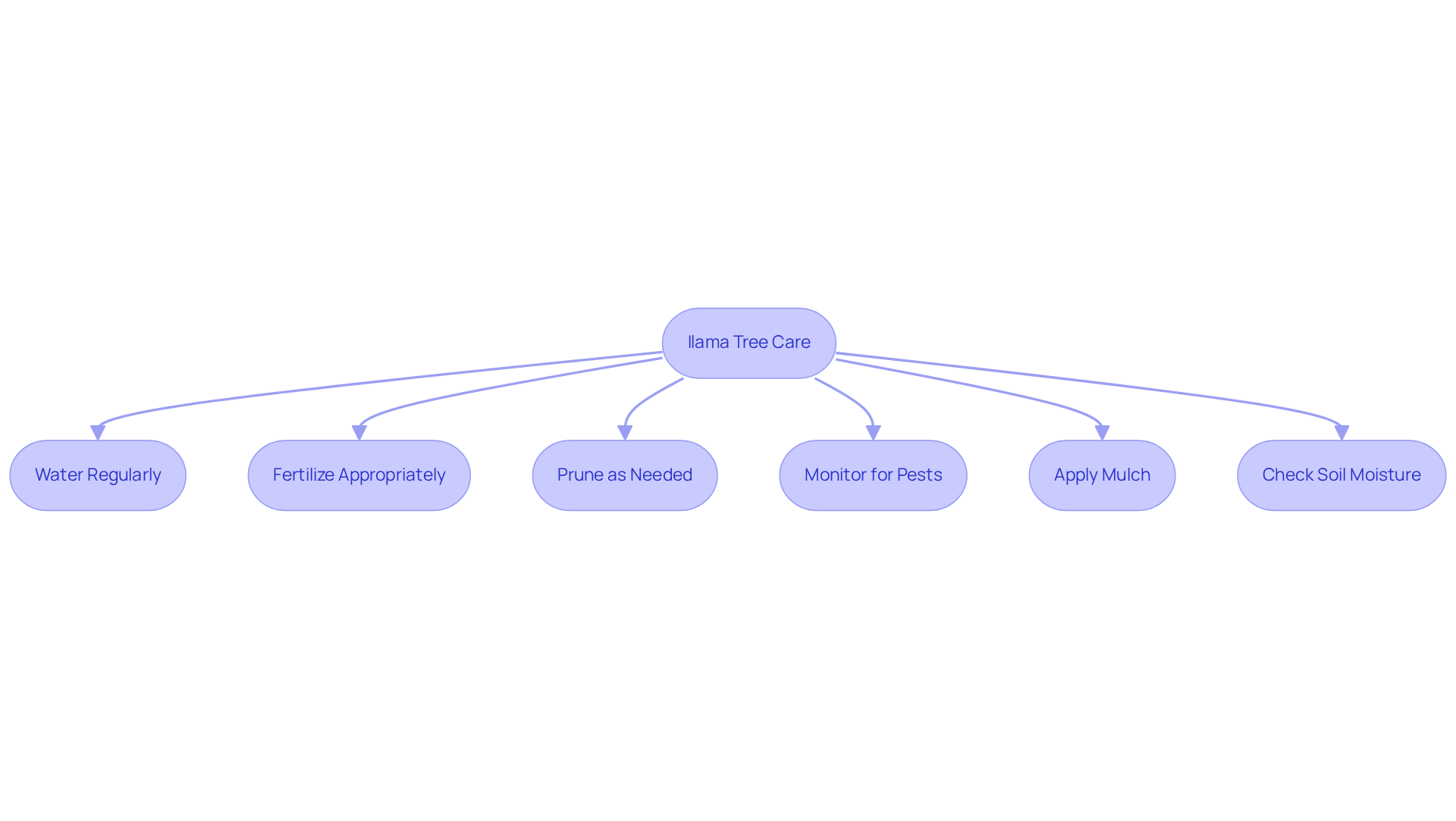
Conclusion
Successfully cultivating an ilama tree requires a thoughtful approach to its growth, encompassing the selection of an appropriate location and ongoing maintenance. By understanding the specific needs of this tropical fruit tree—such as sunlight, drainage, and space requirements—gardeners can create an environment that fosters robust growth and abundant fruit production.
Key steps include:
- Assessing sunlight exposure
- Ensuring proper soil drainage
- Preparing nutrient-rich soil for planting
Correct planting techniques, including proper positioning and thorough watering, establish a strong foundation for the tree's health. Furthermore, ongoing care—through regular watering, appropriate fertilization, and vigilant pest management—ensures that the ilama tree not only survives but thrives in its environment.
Embracing these best practices for growing an ilama tree can lead to a rewarding gardening experience, yielding delicious fruits while enhancing the beauty of any tropical garden. By committing to these steps, gardeners can enjoy the fruits of their labor, both literally and figuratively, as they nurture this unique and valuable tree.
Transform Your Garden with the Ilama Tree!
Start your journey now with Everglades Farm and enjoy the fruits of your labor in no time.
Frequently Asked Questions
What sunlight conditions do ilama trees require?
Ilama trees thrive in full sun and need at least 6-8 hours of direct sunlight daily for optimal growth and fruit production.
How can I determine if the soil is suitable for planting ilama trees?
Ensure that the area has well-draining soil, which should drain within 1-2 hours. Avoid low-lying regions where water tends to gather to prevent waterlogging that can harm the roots.
Why is wind protection important for ilama trees?
Wind protection is important because strong gusts can damage young ilama trees. Insufficient protection may lead to wind damage, adversely affecting the plant's health and growth.
How much space do ilama trees need to grow?
Ilama trees can reach heights of 6-8 meters, so ensure there is adequate space for them to grow. Avoid planting too close to structures or other plants to prevent competition for resources, which supports optimal growth and fruit yield.


